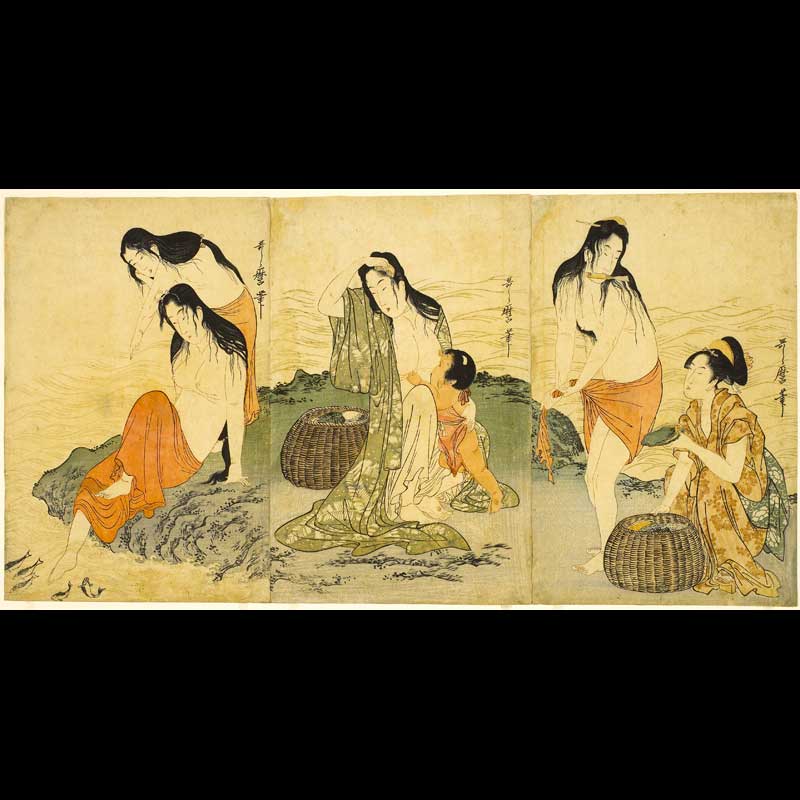Click on the images for a more detailed description.
Prostitution was a fact of life during Japan’s Edo period, especially in male-dominated urban areas. In the city of Edo (now Tokyo), the headquarters of the shogun, large numbers of feudal lords, warriors, and merchants meant that men outnumbered women two to one. In an attempt to control a potentially disruptive aspect of society and to distance it from respectable society, the government established licensed pleasure quarters on the cities’ outskirts. The most famous were the Shimabara in Kyoto (built in 1640), the Shinmachi in Osaka (built in 1631), and the Yoshiwara in Edo (built in 1617 and relocated in 1657).
A visit to these enclaves became an exotic journey, and sexual satisfaction was only part of an evening’s entertainment. Courtesans dressed in spectacular and costly garments and wore stylized make-up and elaborate coiffures. Tutors helped them develop social style and artistic skills, including calligraphy, poetry, tea ceremony, and parlor games, as a means of justifying their high prices. Proprietors reasoned that a more sophisticated clientele would be willing to pay a premium to be among women who were both beautiful and urbane. In this way, the Yoshiwara and other pleasure quarters became the cultural salons of the time. Visitors, in turn, were expected to behave and dress accordingly. Only those possessing wit, knowledge, savoir faire–and money–could hope to gain the attentions of the highest-ranking courtesans.
Woodblock print artists pictured these women as embodiments of the feminine ideal. While they focused on high-ranking courtesans, they also depicted geisha (skilled musicians or dancers), courtesans-in-training, teahouse waitresses, and even the wives of wealthy merchants who followed stylish fashion trends. Known as bijin-ga (pictures of beautiful women), these idealized images helped perpetuate and heighten the public’s fascination with an intoxicating alternate reality that held out the promise of heartrending romance and beauty–however fleeting or illusory.






